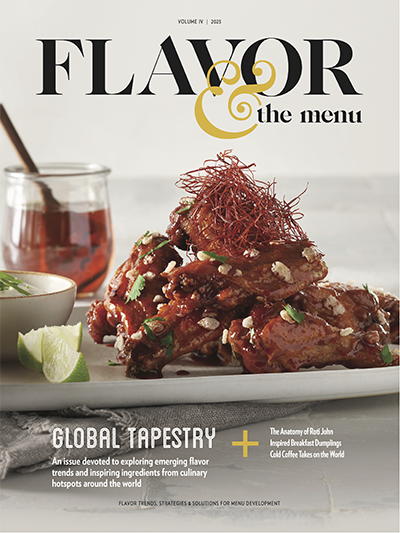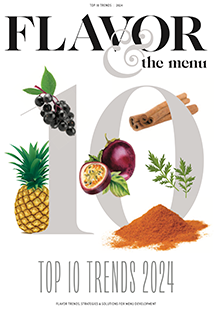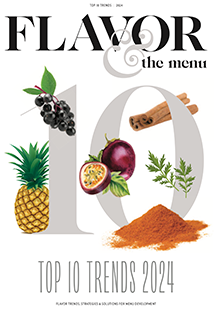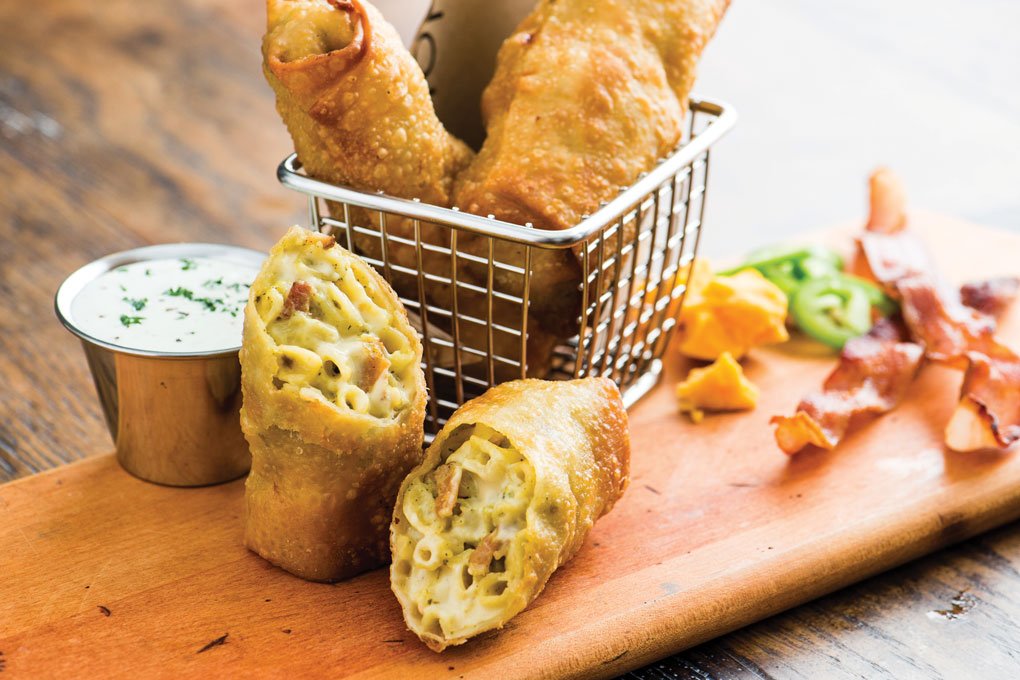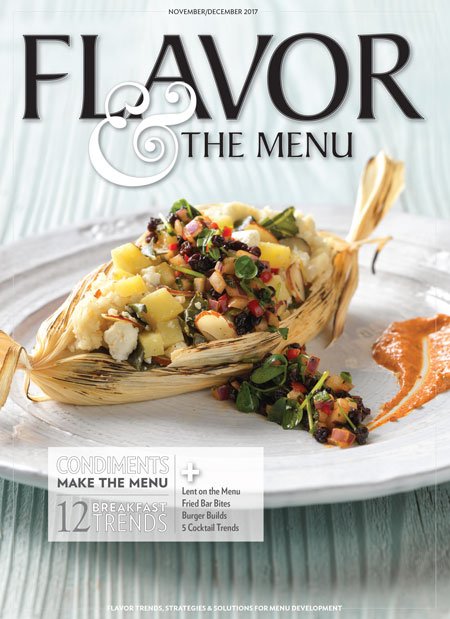By now, the foodservice industry is well aware of the demands of Millennials. Chief among them are great food and noteworthy experiences. Enter the rise of the eatertainment segment, melding memorable experiences with unique, high-quality food and beverage programs that appeal to a range of consumers well beyond Millennials.
What has opened the door to the growth of this widely varied collection of operations is Millennials’ demand for great food anywhere and everywhere. One of the most significant contributions this generation has made to foodservice is the conviction that mediocre food is not acceptable at any type of location, and that great food—high quality, fresh and innovative—can be found at all locations, from food trucks and pop-ups in nail salons to movie theaters and bowling alleys.
At the same time, throwbacks and classics have begun to enjoy new life as this younger generation experiments with these “retro” options, making them relevant to a new generation. This is true of food (think mac and cheese and red velvet cake) as well as operations. As a result, upscale diners, Prohibition-style bars, members-only clubs and other similar operation styles have become more prevalent. But eatertainment concepts take all of this to a new level.
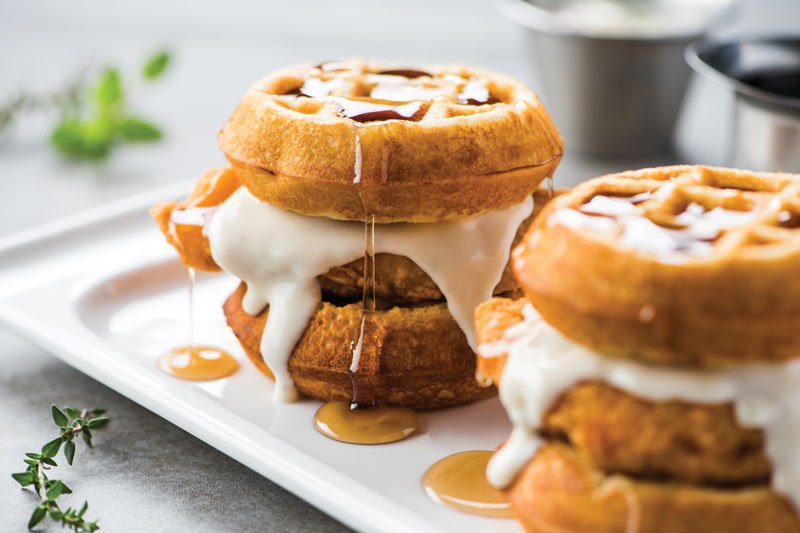 Topgolf
Topgolf Serving up fun with this duo of sliders, Topgolf offers crispy chicken tenders sandwiched in housemade Belgian waffles.
The New Playing Field
Concepts from Alamo Drafthouse Cinema and AMC Dine-In to Punch Bowl Social, Topgolf and Royal Palms Shuffleboard Club combine the demand for great food and the interest in throwback entertainment options. These concepts can hardly be called “classics” as they have redefined what a movie theater, bowling alley, bocce court or driving range may look and feel like.
A key difference between these places and older versions is the role of food. For these eatertainment operators, food is as important as the experience or the entertainment itself. Over the past few years, Punch Bowl Social’s founder, Robert Thompson, has stated that between 85 and 90 percent of total sales are from food and beverage. Clearly, the food and beverage program is far from an afterthought at these operations.
But it would not be accurate to suggest that food and beverages are more important than the entertainment or experience offered. In reality, the true benefit of these concepts is that the food and beverage program and the entertainment enhance each other.
Alone, neither may be enticing enough to compete strongly in an increasingly competitive foodservice landscape or comparable entertainment industries. But combined? Great, interesting food options with modern takes on classic entertainment create a unique competitive positioning in both industries.
For the movie theater eatertainment concepts, this model creates fierce competition with the at-home experience that has increasingly cut into traditional movie theater sales. Given the high-quality and low-cost options now available to consumers at home, coupled with the desire for better food and beverages than what is typically offered at traditional theaters, consumers in growing numbers have chosen to stay home rather than go out to see a movie.
Now, with higher quality food, unique beverage programs and high-end theater amenities, movie theater eatertainment operators offer an experience consumers would be hard-pressed to recreate at home.
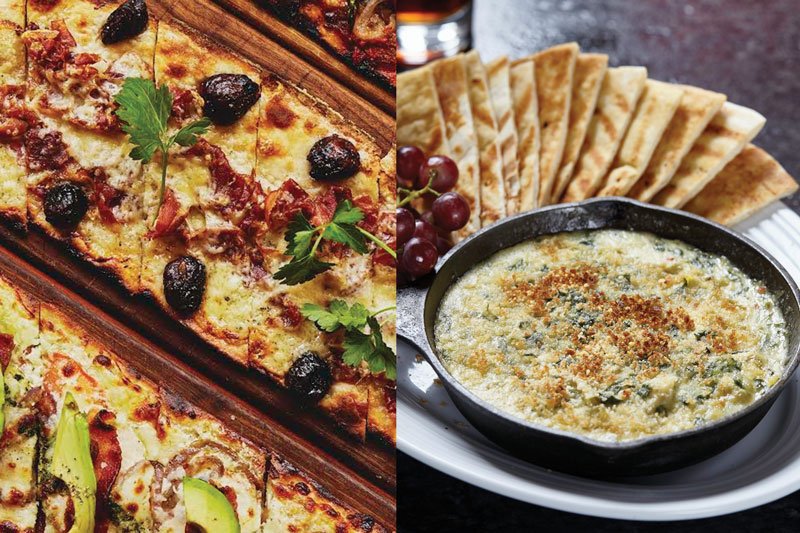 Pinstripes
Pinstripes Starters like a flatbread trio and spinach and artichoke dip invite social interaction, making craveable food choices part of the attraction at Pinstripes, based in Chicago
For eatertainment concepts that focus on other social sports and activities, one of the greatest benefits is opening these experiences to consumers who may not be within the target market or consider themselves “players.” While a non-bowler may shy away from accompanying friends to a traditional bowling alley specifically because they won’t be bowling, eatertainment venues offer these consumers a strong reason to visit: great food and drinks, and a fun, social environment in which to relax. Whether they play or not, the space is designed to facilitate socializing.
In fact, Topgolf is credited with bringing younger consumers into golf, a sport that has struggled to gain younger viewers and participants. What was once perceived as a dull day at the driving range, for some is now an exciting night out.
Technology is often worked into these concepts, appealing to the high-tech younger generations. Topgolf balls, for example, are micro-chipped to make them easier to track. Overall, technology is often integral to both the ambiance and the experience at many eatertainment venues.
But one must wonder if these venues are also a bit of a backlash against technology. Can something possibly be less high-tech than a game of bocce or shuffleboard? In a society where technology has all but eliminated the need for physical activity when socializing, many of the eatertainment venues put physicality-as-socializing front and center.
One key challenge faced by many of these eatertainment operators, however, is balancing the experience offered with the ability of varied parties to socialize. Noise, lights and other distractions can potentially draw away from the quality of socializing within a larger group, something that is particularly important to Millennial consumers. These venues are challenged with creating dynamic spaces and engaging experiences without diminishing the food and beverage experience for those less focused on the game.
The Big Picture
For the foodservice industry, the growing eatertainment segment presents both challenges and opportunities. At a time when many traditional segments are struggling to remain relevant amidst declining traffic and sales, eatertainment venues are growing at significant rates, both in units and sales. Eatertainment operators are recreating what food can mean to a variety of operators and opening up future opportunities to other venues not yet engaged in foodservice.
As most of these operators are new, creating a brand from the ground up, they’ve been able to set the bar for uniqueness across units. Many are designing each unit to be singular in its own right rather than more cookie-cutter to a brand image.
The desire to have singular experiences—more reflective of the local culture and scene rather than static across a chain system—has challenged many national accounts. In contrast, these eatertainment operators can leverage this shift in consumer demand to their advantage as other competitors struggle to change without losing their brand identity.
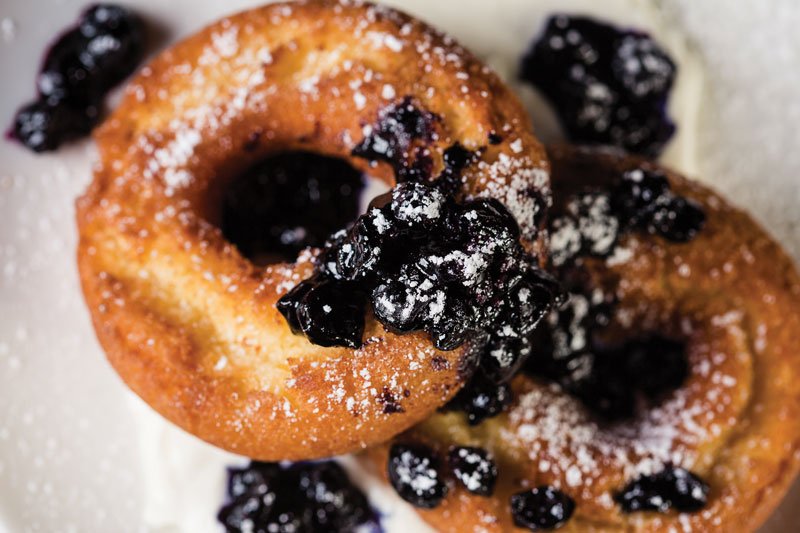 Heather Leah Kennedy for Alamo Drafthouse
Heather Leah Kennedy for Alamo Drafthouse Sour cream cake doughnuts are finished with blueberry compote and whipped crème fraîche at Alamo Drafthouse Cinema
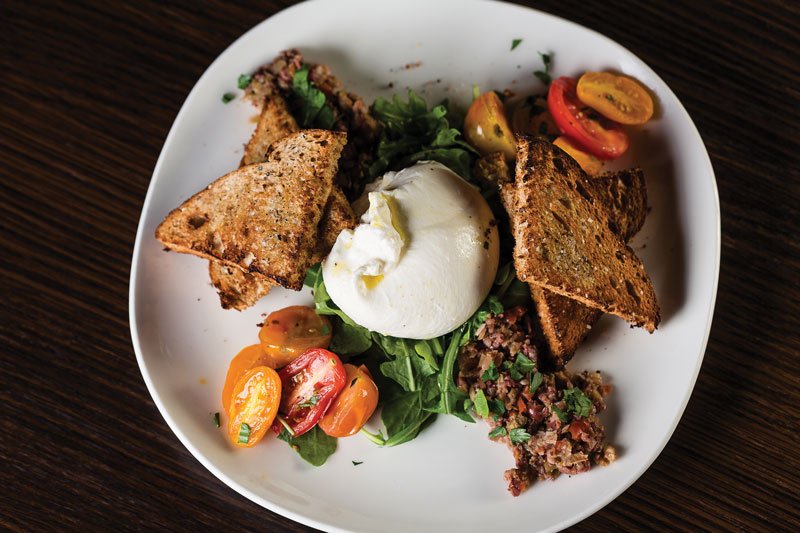 Heather Leah Kennedy for Alamo Drafthouse
Heather Leah Kennedy for Alamo Drafthouse Trending flavors are showcased at Alamo Drafthouse Cinema. Burrata and heirloom tomatoes come with tapenade and toast
The challenge for the industry is what this may mean for the role of food going forward. Certainly, the bar has been raised, and it’s unlikely Gen Z or the generations that follow will accept sub-par food options regardless of venue or segment.
But, as experiences become a more important aspect of the food and beverage occasion, what does that mean for the importance of food in the future? Millennials are an extraordinarily food-focused demographic, with food playing a critical part of their economy, identity, interactions and political activism.
One has to wonder if the eatertainment industry is the beginning of a shift in the role of food for future generations who may place a greater emphasis on other aspects of going out. Food is unlikely to disappear from the equation, but will it become a supporting player rather than a key element? It’s worth monitoring as Gen Z graduates and begins to exercise their influence through their spending habits.
For now, however, the eatertainment segment is a big win in the foodservice industry. While it certainly creates more competition in an already incredibly competitive landscape, it also continues to support the idea that high-quality food and beverage is not something “owned” by the fine-dining segment or something accessible only to some.
It’s exciting to see how this segment will evolve and in what direction the idea of entertainment designed hand-in-hand with strong food and beverage programs may propel the industry overall.
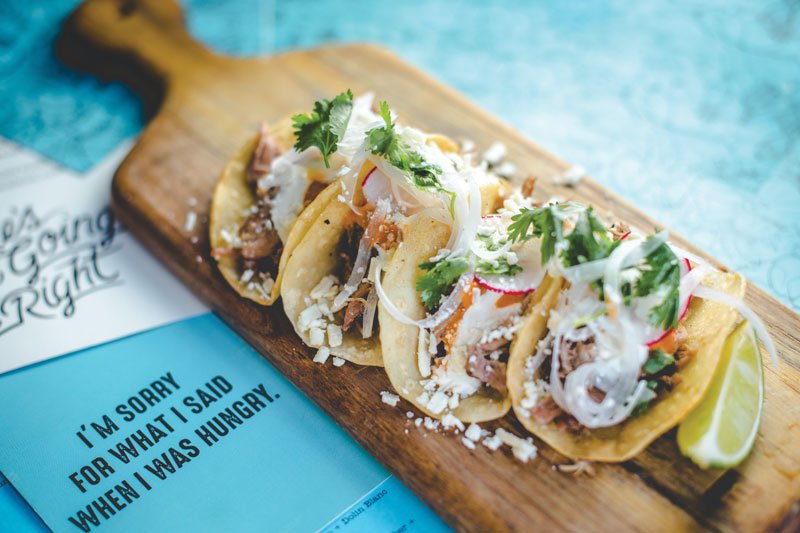 Amber Boutwell for Punch Bowl Social
Amber Boutwell for Punch Bowl Social Modern taco presentations, like these Li’l Street Tacos at Denver-based Punch Bowl Social, fit the shareable, social vibe of eatertainment venues

